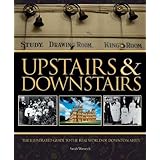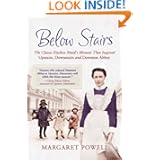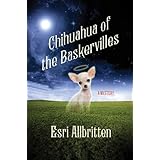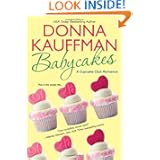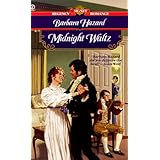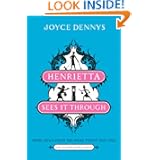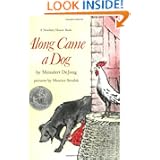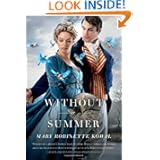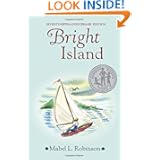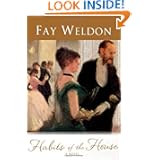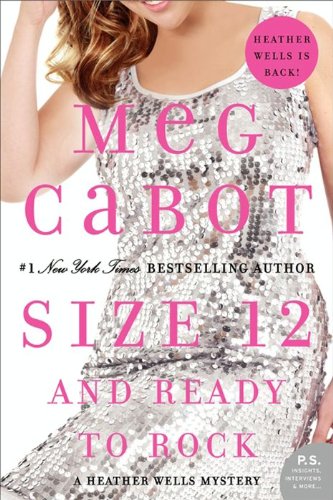What I've Read This Week . . .
The Real Jane Austen: A Life in Small Things by Paula Byrne -- Non-Fiction
This new book uses ordinary objects from Jane Austen's life to examine the famous author's life and times. Paula Byrne seeks to show that Jane Austen was far more than the demure spinster aunt her family portrayed her in the Victorian era. Instead of a life limited to "Three or four families in a country village," Jane Austen had a wider range of experiences that influenced her writing. Each chapter revolves around one particular object and shows how that object fit into Jane Austen's life. Paula Byrne quotes extensively from Austen family letters, novels (Jane wasn't the only novelist in the family), period book reviews and other primary sources as well as biographies and travel books. This book paints a picture of a woman who lived a rich life. Through her family, neighbors, friends and visits, Jane Austen obtained a wide knowledge of the world. She developed her sly wit early on with the influence of her literary family, she enjoyed fame when it finally arrived and she loved the money that she earned from her writing. In contrast to being depressed and unproductive during her Bath years, Paula Byrne argues that Jane was busy socializing, shopping, waiting for Susan to be published, writing The Watsons and revision First Impressions and Elinor and Marianne. This statement is a bit controversial but it makes a lot of sense given the evidence provided. I'm inclined to agree that Bath was a productive time for Jane Austen.
Paula Byrne also speculates on the identity of the sitter of a portrait she believes could be Jane Austen. The portrait has caused a lot of uproar in the Jane Austen community. Byrne states there is evidence that the portrait is authentic to the time period and the woman looks very similar to the known portraits of the Austen men. I agree that it looks like it could be an Austen, but my personal opinion, knowing nothing about art, is that perhaps the face was done while Jane Austen sat and the rest was filled in later and or the portrait was done from memory. In the epilogue, Byrne admits that we will never know Jane Austen because she never showed her true face to the world. The only known true portrait of her shows her with her back to the viewer. Even Cassandra's famed watercolor is not said to be a true likeness.
Some of this book is biography but in places it is also a social history, examining the world in which Jane Austen lived. It's also literary criticism. The author makes some bold statements such as Tom Bertram was homosexual and Jane Austen understood she was making witty jokes in Mansfield Park (Mary Crawford's quip about "Rears and Vices" was intended as a double entendre). Byrne also can't tell the difference between Charlotte and Emily Bronte but her conclusion about the country house as a setting is valid.
Some of the chapters went off on tangents about distant relatives, distant connections and so forth. I needed a family tree to keep them all straight. Those parts really dragged for me and made the book less interesting. It seemed like the author was reaching to make a connection between Jane Austen and that object when there really wasn't a good one.
This is a long book but it can be picked up and read a little at a time, out of order or in order, however the reader wishes. It took me (a fast reader) two weeks to read it a little at a time. I've read many biographies and Jane Austen blogs so not all the information was new to me, but I really liked the way it was presented and I learned a lot from it. This volume is a good addition to any serious scholar's library and worth a read for everyone who loves Jane Austen and her time period.
The Real Jane Austen: A Life in Small Things by Paula Byrne -- Non-Fiction
This new book uses ordinary objects from Jane Austen's life to examine the famous author's life and times. Paula Byrne seeks to show that Jane Austen was far more than the demure spinster aunt her family portrayed her in the Victorian era. Instead of a life limited to "Three or four families in a country village," Jane Austen had a wider range of experiences that influenced her writing. Each chapter revolves around one particular object and shows how that object fit into Jane Austen's life. Paula Byrne quotes extensively from Austen family letters, novels (Jane wasn't the only novelist in the family), period book reviews and other primary sources as well as biographies and travel books. This book paints a picture of a woman who lived a rich life. Through her family, neighbors, friends and visits, Jane Austen obtained a wide knowledge of the world. She developed her sly wit early on with the influence of her literary family, she enjoyed fame when it finally arrived and she loved the money that she earned from her writing. In contrast to being depressed and unproductive during her Bath years, Paula Byrne argues that Jane was busy socializing, shopping, waiting for Susan to be published, writing The Watsons and revision First Impressions and Elinor and Marianne. This statement is a bit controversial but it makes a lot of sense given the evidence provided. I'm inclined to agree that Bath was a productive time for Jane Austen.
Paula Byrne also speculates on the identity of the sitter of a portrait she believes could be Jane Austen. The portrait has caused a lot of uproar in the Jane Austen community. Byrne states there is evidence that the portrait is authentic to the time period and the woman looks very similar to the known portraits of the Austen men. I agree that it looks like it could be an Austen, but my personal opinion, knowing nothing about art, is that perhaps the face was done while Jane Austen sat and the rest was filled in later and or the portrait was done from memory. In the epilogue, Byrne admits that we will never know Jane Austen because she never showed her true face to the world. The only known true portrait of her shows her with her back to the viewer. Even Cassandra's famed watercolor is not said to be a true likeness.
Some of this book is biography but in places it is also a social history, examining the world in which Jane Austen lived. It's also literary criticism. The author makes some bold statements such as Tom Bertram was homosexual and Jane Austen understood she was making witty jokes in Mansfield Park (Mary Crawford's quip about "Rears and Vices" was intended as a double entendre). Byrne also can't tell the difference between Charlotte and Emily Bronte but her conclusion about the country house as a setting is valid.
Some of the chapters went off on tangents about distant relatives, distant connections and so forth. I needed a family tree to keep them all straight. Those parts really dragged for me and made the book less interesting. It seemed like the author was reaching to make a connection between Jane Austen and that object when there really wasn't a good one.
This is a long book but it can be picked up and read a little at a time, out of order or in order, however the reader wishes. It took me (a fast reader) two weeks to read it a little at a time. I've read many biographies and Jane Austen blogs so not all the information was new to me, but I really liked the way it was presented and I learned a lot from it. This volume is a good addition to any serious scholar's library and worth a read for everyone who loves Jane Austen and her time period.


